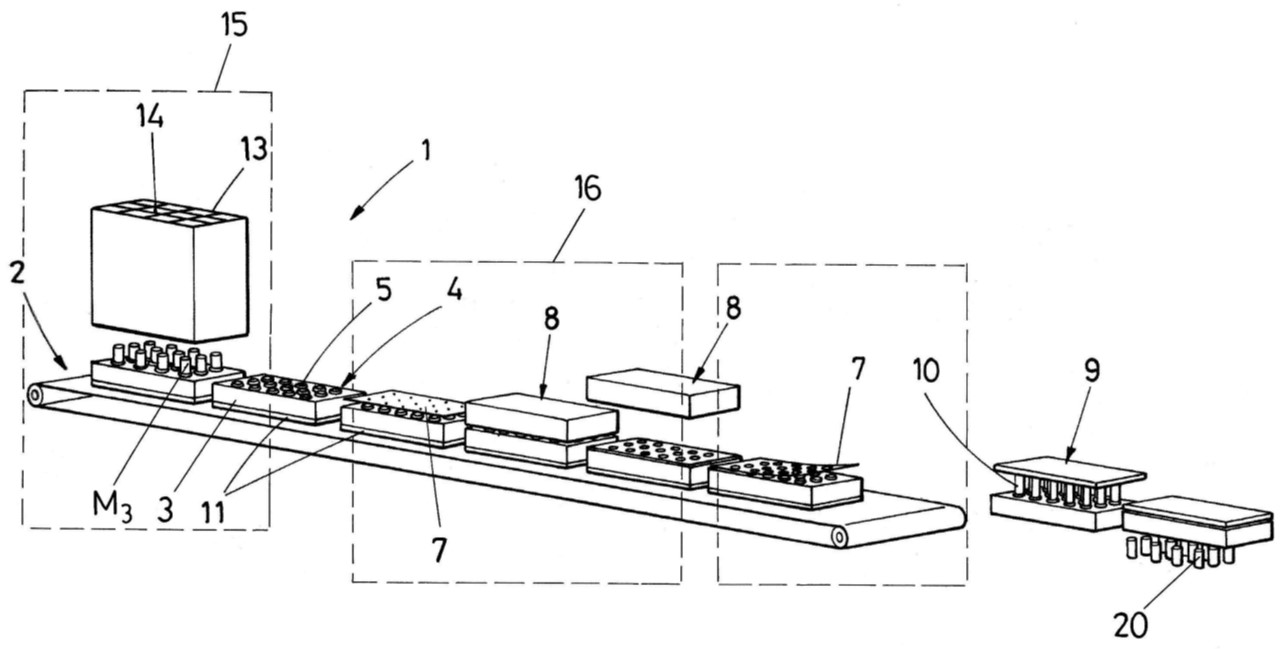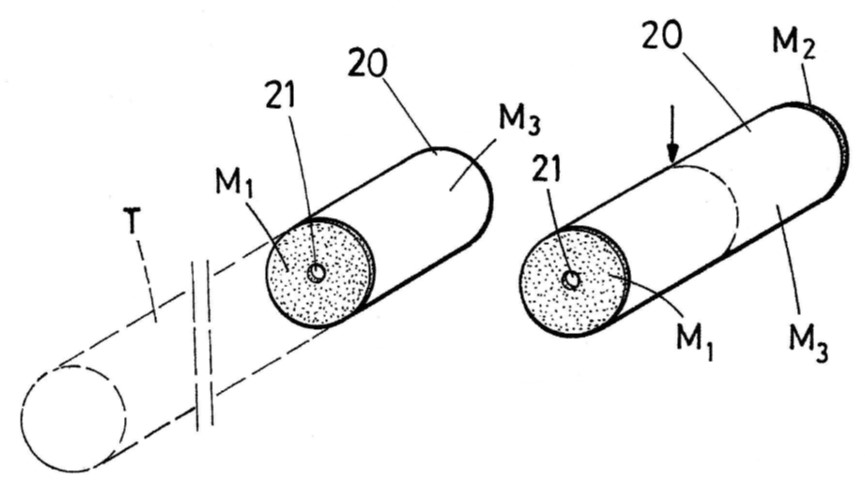Never miss an update from Universidad de Alicante
Create your free account to connect with Universidad de Alicante and thousands of other innovative organizations and professionals worldwide
The Institute of Chemical Process Engineering of the University of Alicante has developed equipment that makes it possible to manufacture filters capable of trapping 60% of the tars and toxic compounds present in tobacco smoke.The process used is fully automated, allows mass production, is environmentally friendly, and produces very economical and efficient filters suitable for use in both conventional cigarettes and roll-your-own tobacco. Scientific experiments carried out on a laboratory scale support the excellent results of this new filter concept that protects the health of smokers.The technology is patent protected. Companies interested in acquiring this technology for worldwide commercial exploitation are being sought.
TECHNICAL DESCRIPTION
In order to solve the problems described above, a device has been developed that automatically produces filters that reduce tars and toxic compounds in tobacco smoke.
This equipment (see Figure 1) consists of:
• A conveyor belt provided with a supplying station containing a filter loading part to position and introduce the fibrous membranes into a housing part.
• A compression station containing a press.
• A scrubbing station containing extraction elements (e.g., gripper type) that remove the unsealed portion of residual film from the top surface after pressing and sealing portions of the film onto the fibrous membranes.
• A hole punching station.

Figure 1: perspective view of the automatic filter manufacturing equipment.
The different possible configurations of the equipment are characterised in that they comprise:
• A mould with a base and a housing part with through openings for several compartments.
• An attachable filter loader part consisting of a series of feed channels concentric to the through openings.
• A film with a self-adhesive face that comes into intimate contact with the far end of the fibrous membrane. This sheet comprises at least one orifice whose free cross-section of the smoke stream is transverse to the fibrous membrane, and has been optimised to maximise the retention of tars and toxic compounds from tobacco smoke.
• A press that die-cuts and seals the self-adhesive primary membrane film to the fibrous membrane inseparably.
• A rib with a cutting edge.
• An extraction piece with one or more spikes or projections concentric to the compartments, which may be symmetrical or asymmetrical.
The process for manufacturing this type of filter comprises the following steps:
a) Insert several fibrous membranes (usually of cellulose acetate or similar) flush into the compartments of a mould.
b) Place a sheet of impermeable or semi-permeable material, with a self-adhesive face, in intimate contact with the end of the fibrous membranes inside the mould compartments.
c) Compress, using a press, the front foil with the fibrous membranes, thus inseparably sealing the fibrous membrane with the foil portion.
d) Remove the fibrous membranes sealed with the films from the mould. Simultaneously with the removal, one or more holes of a certain diameter are drilled in the section of foil that has been sealed to the fibrous membrane. Alternatively, the holes in the film can be made prior to pressing.
e) Remove the filter assembly that has been obtained by inseparably sealing the fibrous membrane to the perforated primary membrane.
In addition, the fibrous membranes could be reintroduced in a direction opposite to that described in step a) to obtain filters with a weakened intermediate section intended to be cut by the smoker (see drawing on the right of Figure 2). Thus, by cutting the fibrous membrane in half, two filters are obtained ready to be used by the user or in conventional cigarette making machines.

Figure 2: Perspective view of possible filter configurations.
TECHNOLOGY ADVANTAGES AND INNOVATIVE ASPECTS
ADVANTAGES OF THE TECHNOLOGY
The main advantages of this new equipment are listed below:
1) It is cost-effective to manufacture these filters.
2) The process is fully automatable, which significantly increases production capacity and allows mass production.
3) The manufacturing process is very fast.
4) The materials used are environmentally friendly.
5) The raw materials used are commercially available and readily available.
6) The resulting filters are very effective (they reduce around 60% of tars and other toxic compounds in tobacco smoke).
7) The pleasant sensation of the smoking process is maintained (no change in taste, no increase in the number of puffs).
8) The membrane is inseparable from the filter, which is very convenient for the user.
INNOVATIVE ASPECTS OF THE TECHNOLOGY
1. At present, there is no commercial equipment on the market capable of automatically producing this type of filter to protect smokers' health.
2. The equipment allows several stages of the production process to be carried out simultaneously, which significantly increases the production capacity of the filters and they can be mass-produced.
3. This innovative technology can be easily implemented in the production of filters for conventional cigarettes, RYO (Roll-Your-Own) and MYO (Make-Your-Own).
CURRENT STATE OF DEVELOPMENT
The technology has been developed on a laboratory scale. For this purpose, several smoking experiments have been carried out with 3R4F tobacco from the University of Kentucky. The conditioning and smoking conditions described in the ISO 3308 standard were used for both reference cigarettes and those using the different filter membranes described above.
The gases obtained were analysed, as well as the composition of the condensed matter in Cambridge filters downstream of the filters studied (corresponding to the tars and toxic compounds that would be inhaled by the smoker).
Experiments have been carried out with membranes of different economical and sustainable materials obtained by die-cutting, by surface fusion of the end of the filter in contact with tobacco and subsequent perforation, by deposition of a film of cellulose acetate solution on the same end of the filter and subsequent perforation, by painting with an acrylic paint and subsequent perforation, and in all cases excellent results have been obtained.
For each experiment, 15 cigarettes were smoked according to ISO 3308 specifications, and all samples generated pressure losses lower than specified.
In all experiments, a significant condensation of tars was observed immediately after the orifice (irrespective of the procedure used to obtain the filter with the perforated sealed membrane).
Therefore, the filter of the invention reduces nicotine by 58-74%, tars by 57-75% and other toxic compounds present in tobacco smoke by 54-63% compared to the use of a conventional filter.
A prototype is currently available for demonstration.
COLLABORATION SOUGHT
Companies interested in acquiring this technology for commercial exploitation are sought:
• Patent licensing agreements.
• Development of new applications.
• Agreements on technology and knowledge transfer.
Company profile sought:
• Manufacturers of filter machines for conventional cigarettes.
• Manufacturers of filter machines for rolling tobacco.
• Manufacturers of punching machines for the tobacco industry.
Ahead of the current Coronavirus outbreak, Innoget is fully committed to contributing to mobilizing scientific and expert communities to find a real solution to the Covid-19 pandemic. Therefore, we're supporting worldwide calls and programs that could help in any aspects of the coronavirus crisis.
Is your organization promoting or looking for innovation or research initiatives to mitigate the Covid-19 outbreak? Email us at covid19@innoget.com to list them.
Channeled through Innoget's online open innovation network, initiatives in the health, virology, medicine, or novel technologies applied to human health, among others, are listed and disseminated to Innoget members -ranging from hospitals, research institutes, scientists, businesses, and public administrations- and innovation partners worldwide.
Create your free account to connect with Universidad de Alicante and thousands of other innovative organizations and professionals worldwide
Send a request for information
to Universidad de Alicante
Technology Offers on Innoget are directly posted
and managed by its members as well as evaluation of requests for information. Innoget is the trusted open innovation and science network aimed at directly connect industry needs with professionals online.
Need help requesting additional information or have questions regarding this Technology Offer?
Contact Innoget support